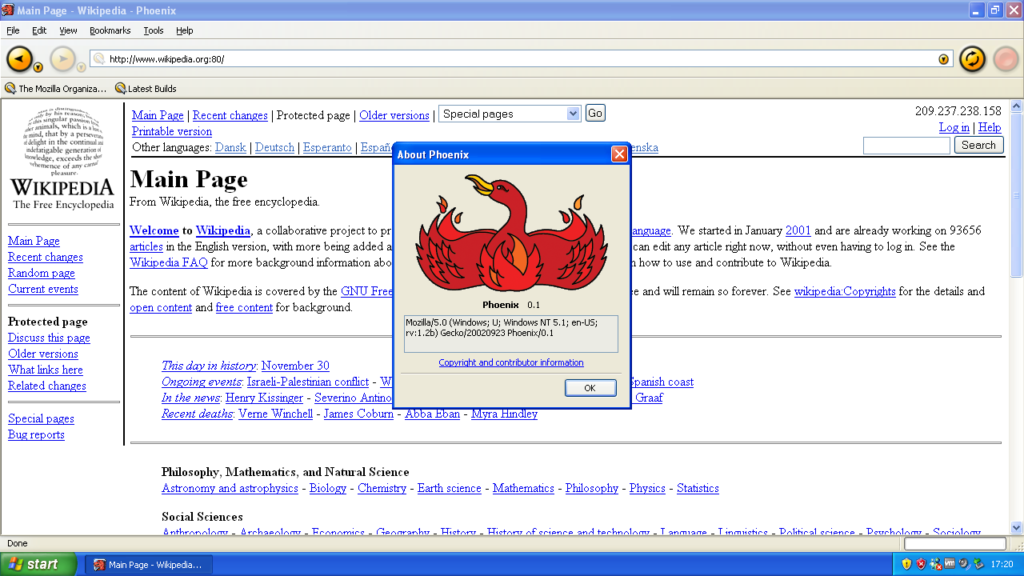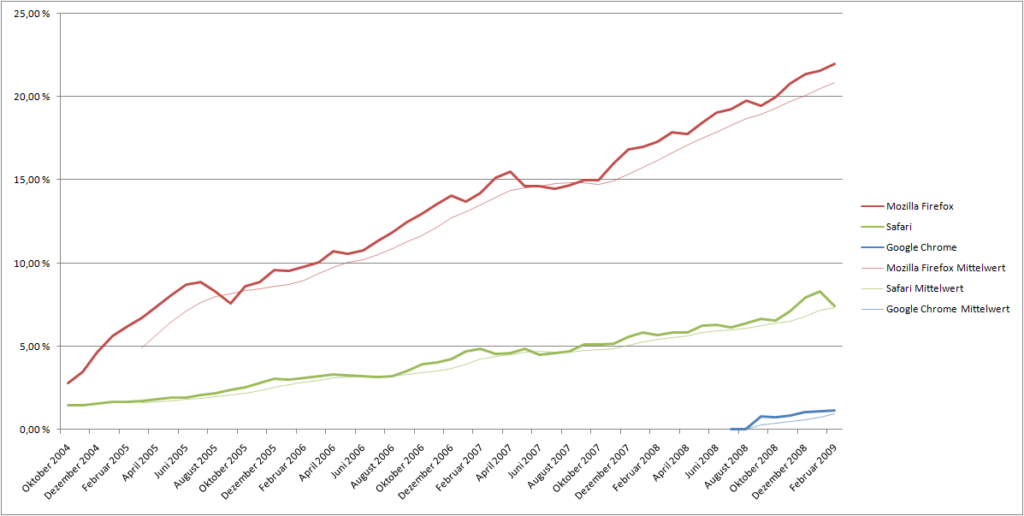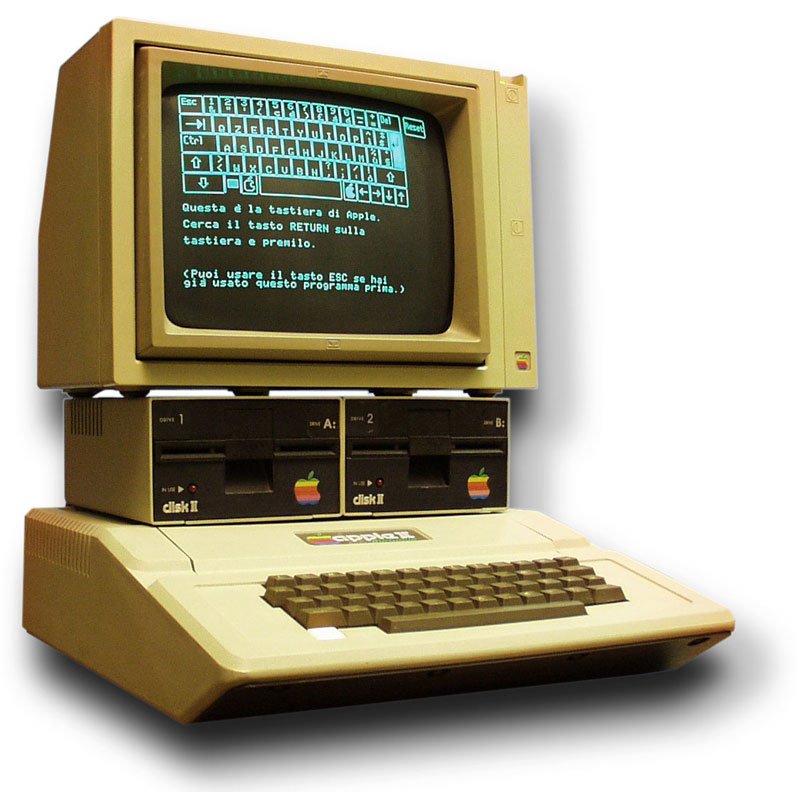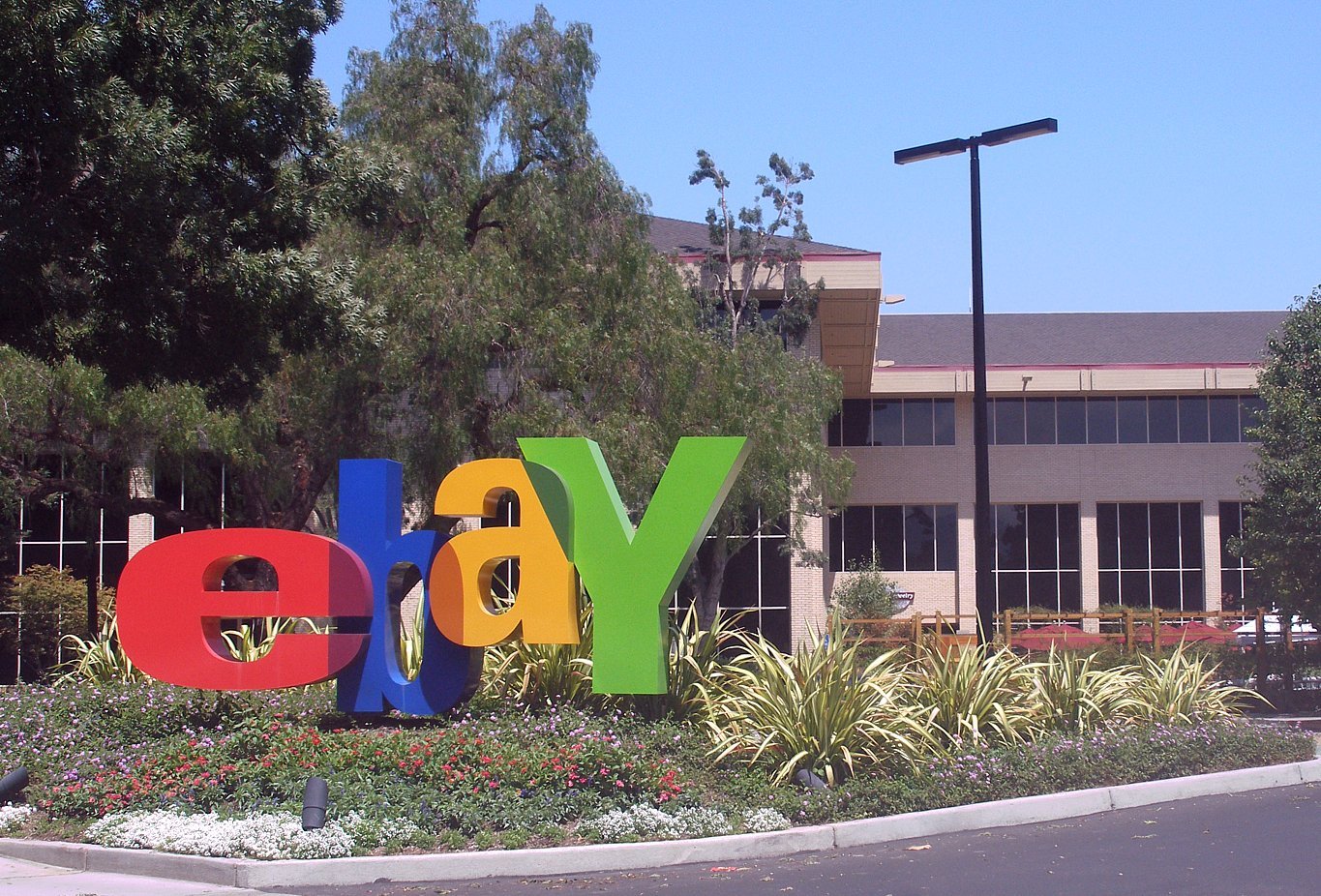The evolution of Mozilla Firefox is a compelling journey that intertwines the roots of the internet with the relentless pursuit of innovation and user-centricity. Born from the ashes of Netscape Navigator, Firefox emerged as a beacon of open-source possibilities, rewriting the narrative of web browsing. In the early 2000s, the Mozilla project set out to create a standalone browser, initially named Phoenix and later Firebird, before settling on the iconic moniker, Firefox, in 2004.
Firefox’s ascent to prominence was marked by its commitment to standards compliance, tabbed browsing, and a vibrant ecosystem of extensions, allowing users to tailor their browsing experience. The browser’s early success was pivotal in challenging the dominance of Internet Explorer, ushering in a new era of competition and choice in the browser landscape.
However, challenges arose as competitors intensified, and Firefox faced criticisms for performance issues. The advent of Google Chrome further altered the dynamics, leading to a decline in Firefox’s market share. Yet, Mozilla responded with resilience and strategic foresight.
The Quantum project in 2017 marked a pivotal moment in Firefox’s trajectory. It introduced a revamped engine, emphasizing speed and performance. Firefox’s commitment to user privacy became more pronounced with features like Enhanced Tracking Protection and innovative anti-fingerprinting measures.
In this ever-changing digital landscape, Firefox has continued to reinvent itself. The browser’s rapid release schedule ensures that users benefit from proactive updates, addressing security concerns and introducing new features. Collaborations with partners, such as ProtonVPN, showcase Mozilla’s dedication to user-centric solutions and privacy.
Table of Contents
As we delve into the nuanced history and evolution of Firefox, we witness not just a browser’s journey but a testament to the enduring spirit of open source, user empowerment, and adaptability in the face of technological shifts. This is the story of Firefox – a resilient force in the ever-evolving domain of web browsers.
What is the origin of Firefox?
The origin of Firefox can be traced back to the Mozilla project, which itself emerged from the open-sourcing of Netscape Navigator’s code in 1998. The Mozilla Foundation aimed to develop an open-source browser suite, and in 2002, a standalone browser project, originally named Phoenix, was initiated. Due to trademark conflicts, it underwent a name change to Firebird, but this led to further disputes. Finally, on February 9, 2004, the browser was rebranded as Mozilla Firefox. The name “Firefox” was chosen through community input and reflects the red panda, a small and agile mammal. This marked the beginning of Firefox’s journey as a free and open-source web browser, emphasizing user empowerment, privacy, and innovation.
Is Firefox better than Chrome?
The superiority of Firefox or Chrome depends on individual preferences and specific needs. Firefox is known for its commitment to user privacy, robust customization options, and open-source values. It pioneered features like Enhanced Tracking Protection, offering users more control over their online privacy. Additionally, Firefox Quantum’s overhaul improved speed and performance.
On the other hand, Chrome is recognized for its speed, seamless integration with Google services, and widespread adoption. It has a vast extension library and strong developer support.
Ultimately, choosing between Firefox and Chrome comes down to priorities. If privacy, open source, and customization are paramount, Firefox may be preferable. If seamless integration with Google services and speed are top priorities, Chrome may be a better fit. Users should consider their preferences, needs, and the specific features offered by each browser.
What is Firefox used for?
The superiority of Firefox or Chrome depends on individual preferences and specific needs. Firefox is known for its commitment to user privacy, robust customization options, and open-source values. It pioneered features like Enhanced Tracking Protection, offering users more control over their online privacy. Additionally, Firefox Quantum’s overhaul improved speed and performance.
On the other hand, Chrome is recognized for its speed, seamless integration with Google services, and widespread adoption. It has a vast extension library and strong developer support.
Ultimately, choosing between Firefox and Chrome comes down to priorities. If privacy, open source, and customization are paramount, Firefox may be preferable. If seamless integration with Google services and speed are top priorities, Chrome may be a better fit. Users should consider their preferences, needs, and the specific features offered by each browser.

FireFox: Birth and Ressurection
Mozilla Firefox, commonly known as Firefox, is a free and open-source web browser developed by the Mozilla Foundation. The browser has a rich history, starting with its birth and subsequently facing challenges and undergoing a resurgence. Here’s a detailed overview:
Birth of Firefox
Netscape Navigator Roots
The tale of Firefox originates from the pioneering era of the internet, specifically the late 1990s when Netscape Navigator held sway as one of the earliest and most popular web browsers. Faced with mounting competition, notably from Microsoft’s Internet Explorer, Netscape made a pivotal decision in 1998—they open-sourced the code of their browser. This transformative move gave rise to the Mozilla project, a collaborative endeavor that sought to harness the power of the open-source community. From the ashes of Netscape Navigator, the Mozilla project laid the groundwork for what would eventually become Firefox. This evolution from a proprietary browser to an open-source initiative marked a significant shift, fostering innovation, community involvement, and the eventual emergence of Firefox as a symbol of user-centric, privacy-focused web browsing. The decision to open-source the code in 1998 laid the foundation for Firefox’s journey towards becoming a stalwart in the realm of web browsers.
Mozilla Project
The roots of the Mozilla project can be traced to the open-sourcing of Netscape Navigator’s code in 1998. This move laid the foundation for Mozilla as it sought to pioneer an open-source browser suite. The project’s vision extended beyond just a browser, encompassing a comprehensive suite that included not only web browsing capabilities but also an email client and additional tools. This ambitious undertaking aimed to empower users through open-source principles, encouraging collaboration and innovation in the development of internet-related software. Mozilla’s commitment to open source aligned with the broader ethos of community-driven initiatives, fostering a collaborative environment for the advancement of web technologies. This initial pursuit of an open-source browser suite laid the groundwork for subsequent developments, eventually leading to the birth and evolution of the standalone Firefox browser.

Phoenix and Firebird
In 2002, the Mozilla project embarked on a venture to create a standalone browser, originally christened Phoenix. However, this name faced a hurdle in the form of trademark conflicts, prompting a rebranding effort. Consequently, the browser was renamed Firebird, a moniker intended to convey a sense of speed and agility. Unfortunately, this choice sparked a new set of challenges as it clashed with the Firebird database project, leading to confusion and potential legal issues.
The clash prompted Mozilla to rethink the name once again to avoid any further disputes. After careful consideration and community involvement, the browser was ultimately rebranded as Mozilla Firefox on February 9, 2004. This marked the resolution of naming conflicts and the establishment of the iconic Firefox brand, setting the stage for its future as a prominent and innovative open-source web browser.
Firefox Emerges
In a pivotal moment of the browser’s evolution, Mozilla faced a naming dispute, leading to the rebranding of the browser as Mozilla Firefox on February 9, 2004. The name was not arbitrarily chosen but emerged from a collaborative process involving the community. Firefox, inspired by the red panda, signifies agility and adaptability, qualities that align with the browser’s commitment to providing a nimble and user-centric experience. The selection of the name through community input not only emphasized the open-source nature of the project but also created a sense of inclusivity and shared ownership among users. Thus, the birth of Mozilla Firefox marked not just a technological milestone but a testament to the collaborative spirit that continues to shape the browser’s identity and its dedication to meeting the evolving needs of its diverse user base.
Rise to Prominence
Features and Standards
Firefox gained widespread popularity due to its commitment to industry standards, revolutionary features, and user-centric customization options. It distinguished itself by prioritizing standards compliance, ensuring a consistent and reliable browsing experience across websites. The introduction of tabbed browsing was a game-changer, allowing users to navigate multiple sites within a single window efficiently.
Furthermore, Firefox’s embrace of a vast array of extensions empowered users to tailor their browsing experience according to individual preferences. These extensions ranged from ad blockers and security tools to productivity enhancers, fostering a vibrant and diverse ecosystem.
The combination of standards adherence, innovative features like tabbed browsing, and the flexibility afforded by extensions contributed significantly to Firefox’s success. It not only met the evolving expectations of users but also played a pivotal role in shaping the modern web browsing landscape.
Battle Against Internet Explorer
Firefox played a pivotal role in reshaping the web browsing landscape by challenging the dominance of Microsoft’s Internet Explorer. Emerging in the mid-2000s, Firefox presented users with a compelling alternative characterized by speed, security, and innovative features. At the time, Internet Explorer’s market monopoly had led to stagnation in browser development. Firefox’s arrival introduced a breath of fresh air, offering faster page loading times, robust security measures, and a feature-rich environment with tabbed browsing and a customizable interface.
Users, frustrated with Internet Explorer’s vulnerabilities and lack of innovation, embraced Firefox as a dynamic and user-centric choice. This shift marked a turning point in the history of web browsers, paving the way for increased competition, improved standards compliance, and a focus on user experience that continues to influence the industry today.
Market Share Growth
In the mid-2000s, Firefox experienced a remarkable surge in popularity, reaching a significant market share peak of around 25%. This success marked a pivotal moment in the history of web browsers as Firefox challenged the dominance of Microsoft’s Internet Explorer. The browser’s emphasis on standards compliance, tabbed browsing, and user customization resonated with users, prompting a shift in the way people perceived and interacted with the internet.
Firefox’s success had a profound impact on the browser landscape, influencing the development of other browsers. Competitors took note of Firefox’s user-centric features and began enhancing their offerings, leading to a more competitive environment. This period of heightened competition ultimately benefited users, as browsers vied to deliver improved performance, security, and innovative features, fostering a dynamic and evolving web browsing ecosystem.

Challenges and Decline
Competition and Chrome’s Rise
In the late 2000s and early 2010s, Firefox encountered a significant challenge with the emergence of Google Chrome. Google Chrome, with its emphasis on speed, simplicity, and a minimalist design, swiftly gained popularity among internet users. The competitive landscape of web browsers shifted as Chrome’s performance resonated with a growing audience, causing a notable decline in Firefox’s market share during this period.
Users were drawn to Chrome’s rapid page loading times, efficient resource management, and seamless integration with Google services. Firefox, while renowned for its customization options and commitment to privacy, faced the need to adapt to changing user preferences. This era marked a transformative period in the browser wars, with Chrome solidifying its position as a dominant force, and Firefox responding with subsequent innovations and strategic adjustments to regain its standing in the evolving web browser landscape.
Resource Challenges
During a certain period, Mozilla encountered resource challenges that affected Firefox’s performance, leading to criticism from users who perceived the browser as becoming resource-intensive and slow. As Firefox evolved, incorporating new features and updates, some users experienced a decline in its responsiveness and overall speed. The criticism often centered around issues such as high memory consumption and sluggish performance, which prompted Mozilla to address these concerns.
In response to these challenges, Mozilla implemented strategies to optimize Firefox’s resource usage. The introduction of projects like Firefox Quantum marked a significant effort to revamp the browser’s engine, prioritizing speed and efficiency. While resource challenges were acknowledged, Mozilla’s commitment to enhancing Firefox’s performance and addressing user feedback remained a key focus, demonstrating the organization’s dedication to providing an improved and responsive browsing experience.
Resurgence and Evolution
Quantum Project
In 2017, Mozilla launched a transformative update for its Firefox browser known as Firefox Quantum, representing a significant leap forward in terms of speed and performance. This major overhaul was strategically designed to address the growing demand for a faster and more responsive browsing experience. At the heart of Firefox Quantum’s success was the implementation of a new and powerful browsing engine.
The Quantum project focused on leveraging the latest technologies to optimize the browser’s performance, making it noticeably faster and more efficient. This marked departure from the previous architecture resulted in a quantum leap, pun intended, in terms of responsiveness, rendering speed, and overall user satisfaction. The introduction of Firefox Quantum solidified Mozilla’s commitment to providing users with a cutting-edge browser, capable of meeting the evolving demands of the modern internet landscape.
Focus on Privacy
Firefox places a strong emphasis on user privacy by implementing features like Enhanced Tracking Protection and anti-fingerprinting measures. Enhanced Tracking Protection proactively blocks tracking cookies and scripts from websites, safeguarding users from invasive data collection practices. This feature not only enhances privacy but also contributes to a faster and more streamlined browsing experience.
The inclusion of anti-fingerprinting measures further underscores Firefox’s commitment to online privacy. These measures thwart attempts by websites to create unique user profiles based on browser characteristics, making it more challenging for online entities to track and identify individual users. In an era marked by increasing concerns about online privacy, Firefox’s proactive approach to safeguarding user data aligns with the growing demand for browsers that prioritize user security, transparency, and control over personal information.
Proactive Updates
Mozilla’s adoption of a rapid release schedule has transformed Firefox into a dynamic and ever-evolving web browser. This strategy involves frequent and timely updates to address security concerns, ensuring that users benefit from the latest protective measures against emerging threats. Simultaneously, the rapid release cycle enables the swift introduction of new features, enhancing the overall functionality and user experience. By prioritizing regular updates, Mozilla not only demonstrates its commitment to user security but also reflects an agile approach to adapting to the fast-paced landscape of the internet. This continuous improvement model allows Firefox to stay competitive, providing users with cutting-edge features and improved performance while maintaining a proactive stance against potential vulnerabilities. The rapid release schedule showcases Mozilla’s dedication to keeping Firefox at the forefront of innovation and responsiveness to the evolving needs of its user base.
Partnerships and Innovations
Firefox has demonstrated its commitment to user privacy through strategic partnerships and innovative features. One notable collaboration is with organizations like ProtonVPN, where Firefox integrates with ProtonVPN to offer users a virtual private network (VPN) service. This partnership enhances user security by providing a secure and private browsing experience, particularly when accessing the internet over public networks.
Mozilla has also explored inventive features to enrich user experiences, such as Pocket integration. Pocket is a content discovery platform that allows users to save and discover interesting articles, videos, and web content. By integrating Pocket into Firefox, Mozilla aims to streamline content discovery, making it easier for users to find and engage with relevant and captivating material while maintaining a user-friendly and privacy-focused browsing environment. These initiatives underscore Firefox’s dedication to both enhancing user experience and prioritizing user privacy and security.












